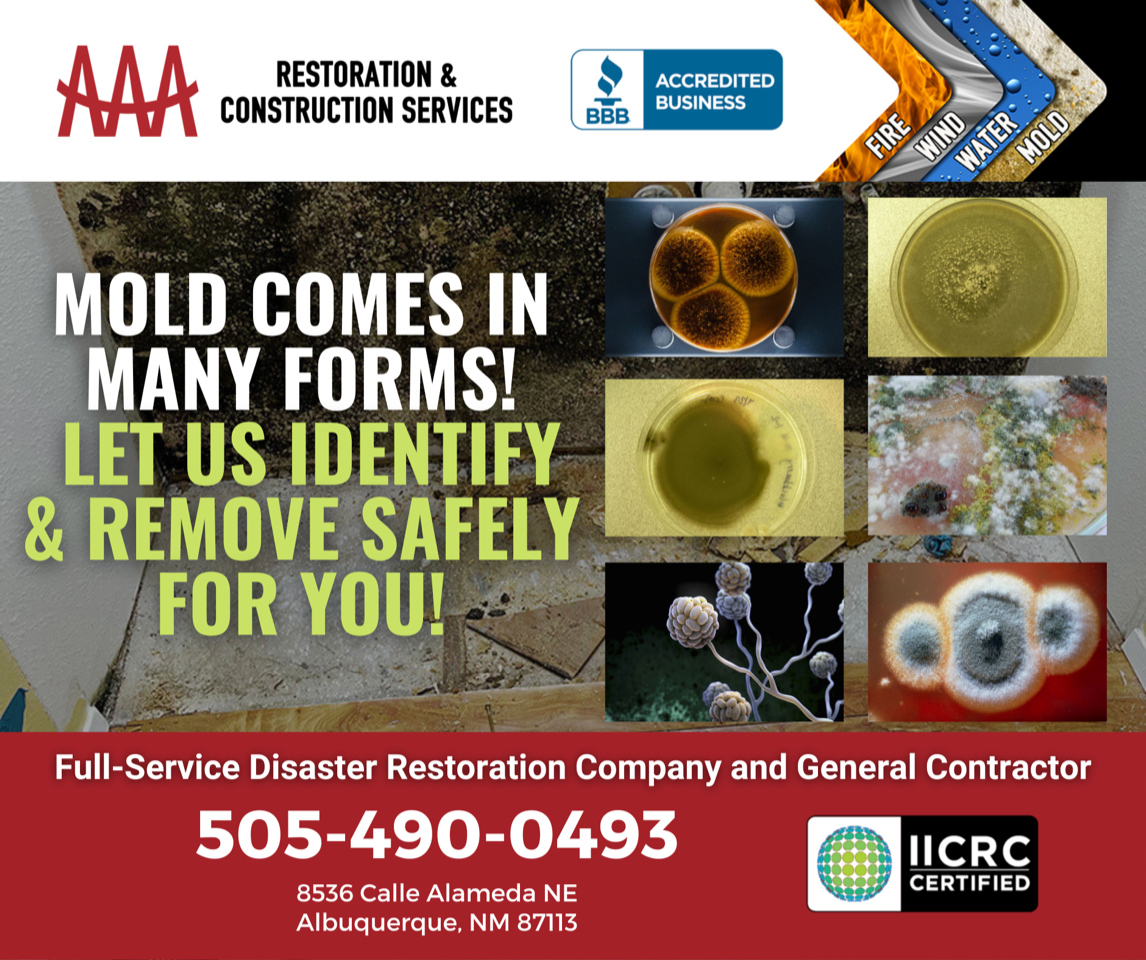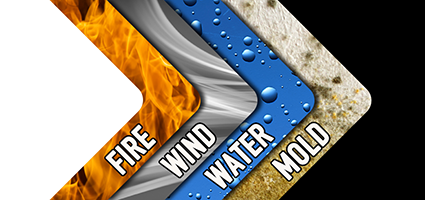
The Different Types of Mold and How to Remove Them
Mold spores are everywhere and when they find moisture and moderate temperatures (60 to 80 degrees Fahrenheit), they thrive and grow. While some fungi are beneficial, many can be dangerous and destructive to property.
The more common molds that most homeowners encounter can be classified into three categories: allergenic, pathogenic, and toxic.
Allergenic molds can require removal by a professional, but most allergenic molds can be removed with home disinfecting products.
Pathogenic molds can be controlled with disinfectants but large colonies require professional removal.
Toxic molds are the most harmful and require a professional to kill the mold and dispose of any affected materials.2
Once the mold is discovered, you should hire a professional or use our guide to help identify the 12 most common types of fungi and develop a plan for removal. Once the mold is removed, it is essential to identify the moisture problem that led to the growth.
For any mold classified as toxic or extensive mold problems, you need to hire a professional.
Acremonium
Typically begins as a small colony of pink, grey, orange or white moist mold that turns powdery. Often found in home humidifiers, HVAC cooling coils, drain and drip pans, and near leaky windows. It’s often found with Strachybotrys (black mold) and requires removal by a professional.
Alternaria
Dark green or brown velvety texture with protruding “hairs”. Most often found in shower stalls, bathtubs, and near sinks. Its presence usually signifies water damage has occurred and the mold will quickly spread. Unless the colony has grown extremely large, it can be safely removed with proper cleaning.
Aspergillus
Typically has grey or green spores that can form thick layers of mold. However, multiple species of Aspergillus appear as different colors. Often appears on wooden surfaces. Extensive infestation should be removed by a professional.
Aureobasidium
First appears as a pink, brown or black mold but turns dark brown as it grows and matures. Found in dark wet and water-damaged areas such as under carpets, behind wallpaper, and on wooden surfaces. Protective clothing, including eye protection and gloves, should be worn during the clean-up of small infestations.
Chaetomium
Mold spores begin as white and cotton-like but darken to gray, brown or black. Distinguished by a musty odor. Thrives in water-damaged drywall, wooden surfaces, wallpaper, and under wet carpet and roof shingles. Often mistaken as black mold, removal is best handled by professionals.
Cladosporium
Found in both cold and warm environments, it has a suede-like texture and is brown or olive green in color. Usually found on carpet, upholstery, drapes, and under floorboards. Small colonies can be cleaned away by the homeowner but larger ones require a professional.
Fusarium
Growth is pink, red, or white. Often found growing on food, it spreads quickly and can be found in carpet, wallpaper, and water-damaged materials.
Mucor
Grows quickly to develop thick patches of white or gray mold. Found in extremely wet spaces where condensation has formed such as near air conditioners, HVAC ductwork, and leaky windows and doors. Classified as allergenic, small patches can be cleaned by the homeowner. Larger infections require a professional.
Penicillin
Surface of the mold colony is velvet-like and blue-green in color. The mold spreads quickly. Often found in HVAC ducts, wallpaper, mattresses, and carpet. Small colonies can be cleaned by the homeowner with care. Larger infestations should be removed by professionals.
Stachybotrys
Known as black mold, the colony has a dark green or black slimy texture. Most often found in areas inside a home that have been exposed to excessive water and humidity for weeks. Typically develops behind walls and ceilings on wood. Removal and disposal of affected building materials must be done by professionals.
Trichoderma
Typically appears as white and green wooly colonies. Can grow on wallpaper, carpet, fabrics, and surfaces exposed to excessive moisture. Usually non-pathogenic, Trichoderma can be cleaned by the homeowner using proper protective measures. It does produce an enzyme that attacks wood, textiles, and paper and can cause damage to building foundations.
Ulocladium
Typically black and formed in clumps. Usually found in kitchens, bathrooms, and basements that have suffered water damage or areas that stay wet for long periods. Caught early, clean up can be done by a homeowner.
Source: https://www.thespruce.com/different-types-of-mold-4772562

